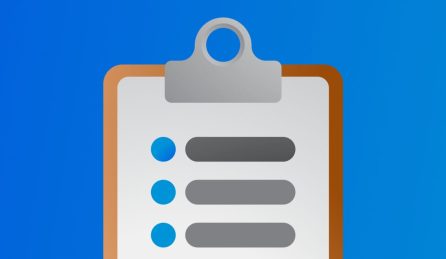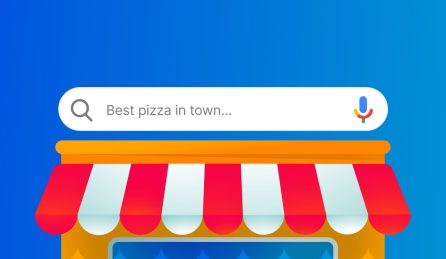Five website mistakes that are hurting your SEO ranking (and how to fix them)
Every site owner out there wants to rank on page one of the search engine results pages (SERPs) for their main keywords, and as close to position one as possible.
But with everyone trying to get “a piece from that apple”, it makes this a goal that’s difficult to achieve. Difficult but not impossible if you’re consistent, if you put in the work and if you use and test the right search engine optimisation (SEO) techniques instead of relying on wild guesses or blindly implementing random advice from random so-called experts.
So if you want to boost your site’s SEO ranking, the first step is to ensure that you’re not making any of these five big SEO mistakes that can drag you down.
1. You’re not fixing your broken pages
If you don’t know what a broken page is, here’s an example:
 A broken or dead link can be caused by anything from making a typo when you created the link to deleting an image, a video or a file, or moving a page and forgetting to update the link.
A broken or dead link can be caused by anything from making a typo when you created the link to deleting an image, a video or a file, or moving a page and forgetting to update the link.
Broken pages are bad for the internet and they’re also bad for your website.
It makes for a bad user experience since visitors get frustrated because they can’t access the information they need, when they need it.
It can also hurt your rankings since visitors landing on a broken page leave within seconds. And because they leave so quickly, search engine algorithms usually assume it’s because visitors don’t find the high-quality content or information that’s relevant to their search. This, of course, results in lower rankings.
So one of the biggest mistakes that can harm your SEO efforts and lower your ranking is not fixing your site’s broken pages, especially if you have backlinks pointing to them.
How to fix it
Make sure you regularly check all your links to ensure they work properly and aren’t broken. You can use tools like Google Search Console to find out if you have any broken links that interrupt the user journey and create a bad overall experience on your website.
Next you’ll need to fix them. Start by examining each link and page, and figure out why it’s broken. Then take the steps to fix each broken link. Read this post to learn more about broken links and how to fix them.
2. Your content is “thin”
Here’s a question: why would Google index a website or a web page if the content on it is thin and adds no value to what’s already on the web?
Google’s mission is to provide its users with relevant, high-quality information and the answers they’re looking for.
So if all you have on your website is “filler content” that’s neither original or helpful to your audience, then of course Google won’t have a solid reason to include you at the top of the search results. Why would it?
How to fix it
From an SEO standpoint, creating content that delivers value and creates an impact on your audience is a must if you want to achieve high rankings.
Here’s the thing: the importance of having quality, helpful, information-rich content on a site has grown over time. However, the basic principles of great content haven’t changed.
Make sure yours is unique, useful and relevant to your audience as well as well written and easy to follow. Read our post to learn what quality content means and how to create content that shows expertise and builds trust.
3. You’re targeting unrealistic keywords
It’s great to think big but you also need to be realistic about what you can achieve. For example, if you want to be able to finish a marathon, you first need to be able to run a 5K.
It’s the same with your website’s SEO. If you sell web design services, you need to target realistic keywords, otherwise the chances of ranking high are very slim.
This is one of the most common SEO mistakes that site owners make, and that is to target broad keywords and keyword phrases that are beyond reach.
The competition is too high to stand a chance, especially as a small business, of ranking at the top of the search results for a general keyword like “web design” or “web design services”.
How to fix it
Instead of competing for generic keywords with a high search volume, go with highly targeted keywords, also known as long-tail keywords. You’ll have a better chance at ranking high if you optimise your content using specific phrases and words that your target audience is searching for.
For example, if you’re a personal trainer in London, make sure to target long-tail keywords like “London personal trainer” or “weight loss personal trainer London” instead of a generic and highly competitive keyword like “personal trainer”.
The idea is that the more specific you are with your keywords, the better your chances of ranking high and of attracting the right people who are actually interested in your content and what you have to offer.
If you want to learn more about keyword research and how to find the right keywords to target in your content, then we recommend you take our free course on search engine optimisation.
4. You have duplicate content on your website
Duplicate content is another common SEO mistake and a big red flag that can result in a penalty from Google.
Whether you’re targeting the same or similar keywords or keywords phrases on two or more pages or you have an exact copy or similar content on a few pages, it’s still duplicate content and it’s bad for your rankings.
Search engines are smart, which means they’ll be able to tell whether a piece of content is original or a spinoff. If you’re creating duplicate content, then that content isn’t likely to rank in Google.
How to fix it
All your content should be completely original and optimised for unique keywords that are relevant to each page.
But even if you’ve put in the work and created unique, high-quality content for each page on your site, it’s still possible to discover that you have duplicate content issues. In fact, did you know that duplicate content can also be created by your content management system?
So how can discover and fix duplicate content issues? A good SEO tool will allow you to spot problem pages with missing or duplicate titles and descriptions so you can fix them immediately.
How? You have two simple options:
- Rewrite the content to make it 100% unique.
- Do a 301 redirect of the duplicate content to the canonical page. Here’s how to do a 301 redirect on any platform. If this sounds too daunting, your web designer should be able to do it for you.
5. You’re not taking steps to improve page load speed
When was the last time you checked your page speed?
If you think page speed isn’t critical to your site’s success in the SERPs, you’re wrong. A page that’s slow to load won’t just lose you potential customers and revenue but also your visibility in the SERPs.
Site speed is a Google ranking factor, and if your site loads slowly, it’s unlikely to top the search results.
Here’s the official word on site speed from Google: “Speeding up websites is important — not just to site owners, but to all Internet users. Faster sites create happy users and we’ve seen in our internal studies that when a site responds slowly, visitors spend less time there.”
How to fix it
The first thing you need to do is to head on over to Google’s free PageSpeed Insights tool and check to see how long it takes your site to load on desktop and mobile.




